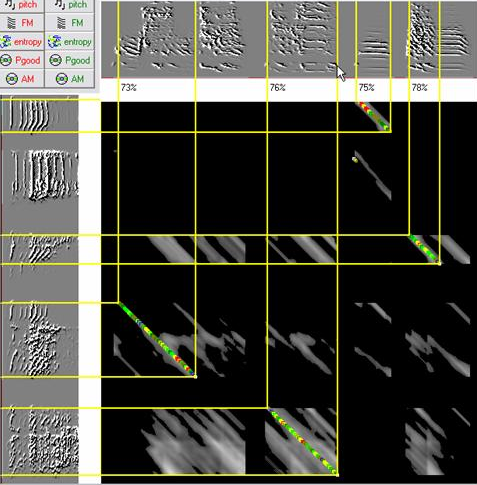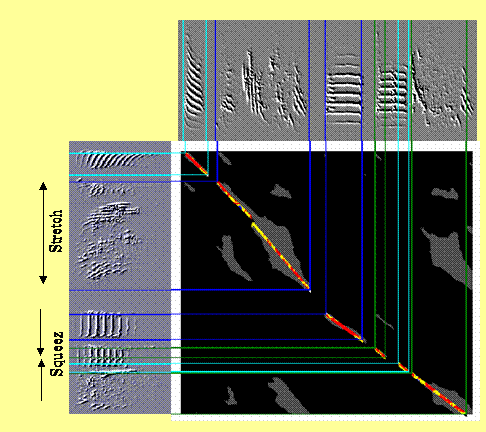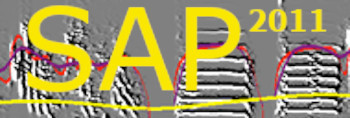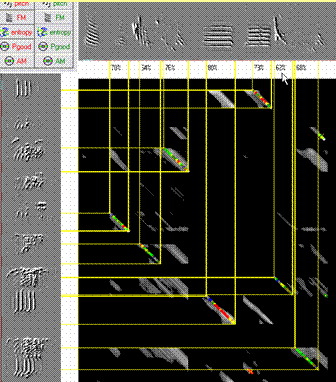Related and unreleated sounds
| < PREVIOUS: Self similarity ______________________________________________________ | > NEXT: Segmented comparisons |
|
|
|
|
|
|
Comparing related and unrelated songs
In this example we compare the song model Samba to the song of a bird that was trained with this model.
In the example below, we examine two songs that share a few syllable types, but in a different sequential order. Note that the low sequential match will reduce the overall similarity score to very low levels. In general, there are cases when sequential match is the most robust marker of song imitation, whereas in other cases, it is not. A lot depends on the spectral diversity across syllables. In some cases, and particularly if the recording quality is poor, you will find it very difficult to obtain a p-value that is selective enough to reject and accept sounds ‘properly’ but even in such cases, one can hope that songs that are ‘really’ similar, will show more sequential match than other songs.

For example, those two unrelated songs have several syllables of complex harmonic structure. Obviously, there are several similar sections, but their sequential match is extremely poor. In sum: in difficult cases, your choices are either to reduce the p-value threshold, or to take the sequential match as a criterion.
In some cases we need to examine similarity between two sounds that differ in their time scale, such that one sound is a stretched or a squeezed version of the other, while the acoustic features of the two sounds (pitch, FM, etc) are otherwise similar. Although Sound Analysis does not perform any calculations of time warping, it can capture similarity across time-warped sounds, where the warp is represented as the slope of the similarity section.
One strength of scoring similarity by sections is that by setting appropriate levels of time warping tolerance SA+ can easily trace time-warped versions of a syllable type, because the similarity sections will ‘aim’ at the best angle that maximizes the similarity as demonstrated below:

As shown, warping the sounds did not have much effect on the similarity score, and we can clearly see the different warps as different slopes of sections in the similarity matrix. You can change the tolerance of Sound Analysis to time warps: Click options and find the time warping slider at the bottom left. Moving the slider all the way to the left will cause rejection of similarity across warped sounds. After changing the threshold you can click Reset, and Score to see how the results change.

